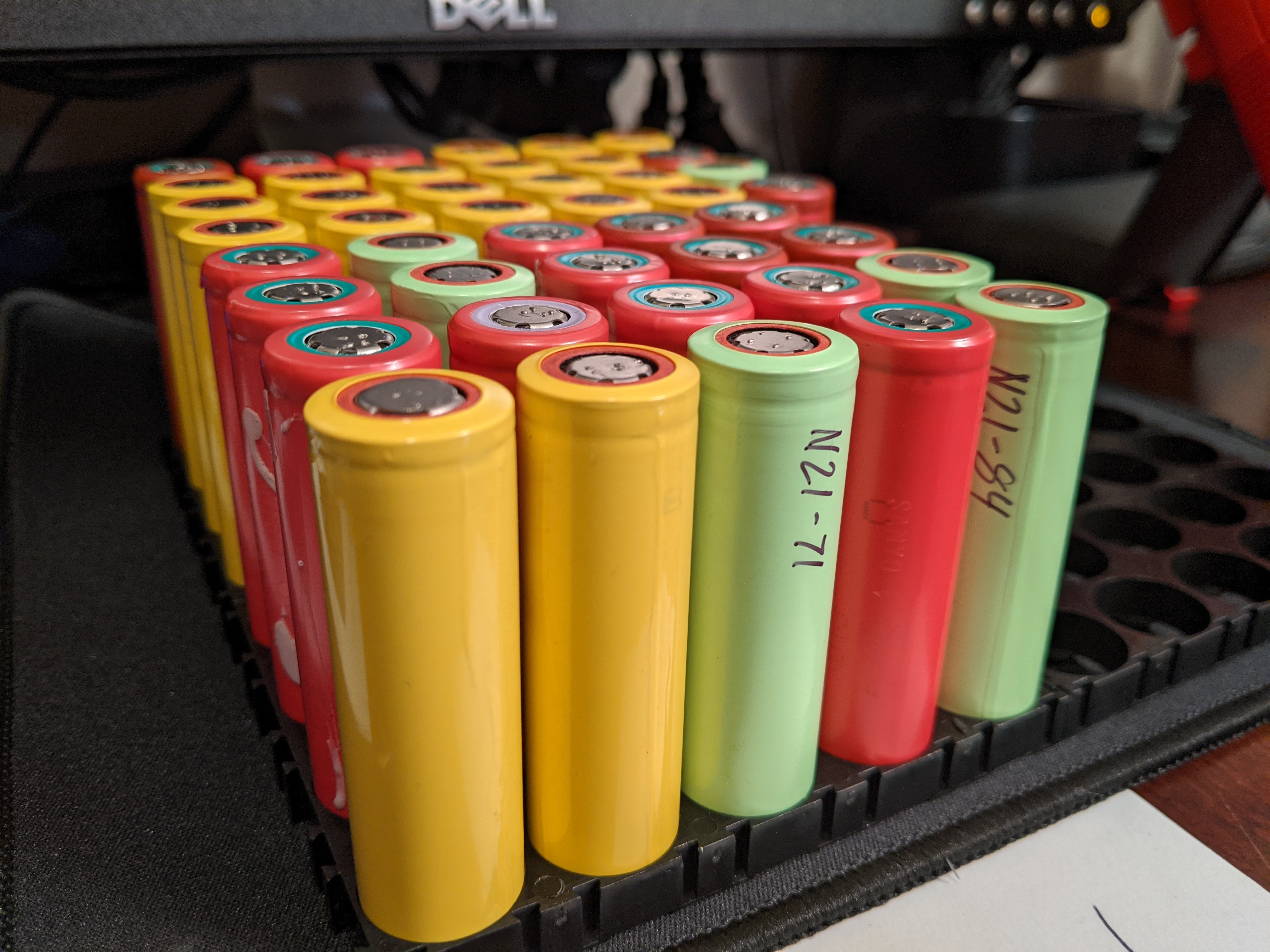
Making a Solar Generator
The Plan:
I came across an opportunity to recycle old laptop style batteries. Many old devices use this Li-Ion 18650 cell. It is a small cell, not much bigger than a “AA” battery, but with a different, rechargeable chemistry. These old battery packs are thrown out for a number of reasons; sometimes a cell will discharge below its safe voltage, and can’t recover with conventional means. Other times, rechargeable batteries lose some of their useful capacity and don’t stay charged long enough. When combined with many different cells, some imagination, and effort, these little cells can be used to make very powerful packs.
My original plan was to make a pack big enough to recharge my smaller drone flight packs, but the more batteries I found, the more I let my imagination run. Now, with well over 80 cells, I intend to make a solar generator.
A solar generator is a small, lug-able, off-grid solar system that can be used in any scenario as one might use a backup gas generator. The main components include: a battery, a solar charge controller, an AC inverter, and a solar panel.
The Battery:
On their own, a Li-Ion batter is not much more powerful than its AA counterpart. The older alkaline cells have a nominal voltage of 3.5v while the lithium ones are 3.7v nominal. Two-tenths of a volt may not seem like a big difference, but with batteries, that can be really significant.
Buying these batteries new can cost up to $5 per cell, and that price makes it prohibitively expensive to undertake this type of project. Recycling older batteries is definitely more cost-efficient. Even buying old batteries will only cost around $0.50. I got my cells from the trash. Harvesting the cells from their plastic packs was difficult, and I had to re-wrap all of the yellow and green ones you see because their red wrapping was damaged. In the end, the effort of a project makes it more enjoyable.
Creating a battery pack of this size is more complicated than just sticking a bunch of cells together. Each group in series has to be matched for capacity, and each cell has to be balanced at the same voltage. Furthermore, each individual cell must be tested to determine if it is healthy enough to be safe. If one cell shorts out in the middle of the pack, it could result in fire, so it is best to be very careful.
Because I need to track the health of 80 cells, my first step is to give them serial numbers. I chose to give them all the number, “N21-xx.” This number lets me know that I got them November 2021, and identifies each individual cell.
Now that I can keep track of which cell is which, I can start testing them. The first step is to use a multimeter to measure continuity and voltage. I only had one battery critically fail this test, and it failed by having no continuity between the positive and negative terminals. Next, I charged the remaining batteries to at least 4.15v, which for a recycled battery is considered to be full, and made sure that they did not get excessively hot.
At this stage, I have determined my cells to be safe. The next step is to test all of the batteries and gather the measurements needed to help group my cells to create the pack. For this, I have a battery tester that will cycle each cell and give results that determine the health of each one. I am testing the discharge capacity (which tells me how long each battery will last) and the internal resistance (which tells me how fast current can move in and out of the battery). If the capacity is too low in the pack, a cell can bring down the useful voltage of a group. If the resistance is too high compared to others, a cell could get dangerously hot under heavy loads.
To keep track of my serial numbers and results, I am using a spreadsheet. The spreadsheet automatically highlights any problematic cell measurements so that I can retest or retire individual batteries. Liz has been helping me to record after tests and load new batteries when I am not home, as each set of 4 cells is taking approximately 6 hours.
Updates On the Solar Generator:
If you want to learn more, then check back here periodically. I will keep updating this post as the project moves forward.